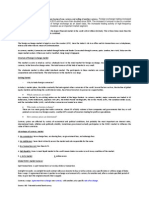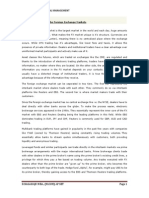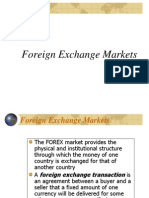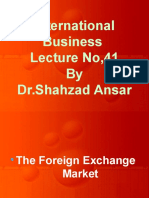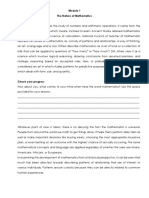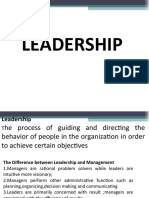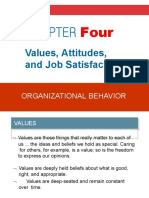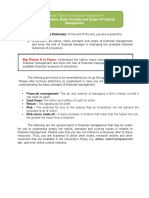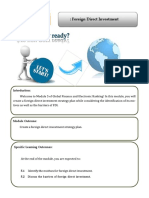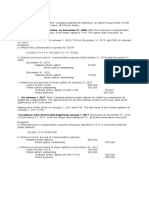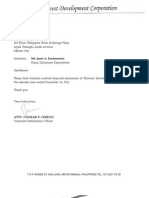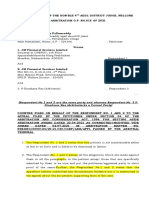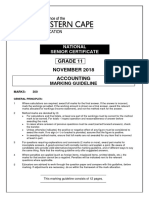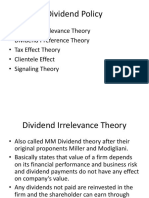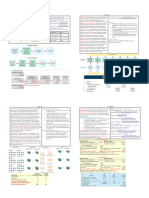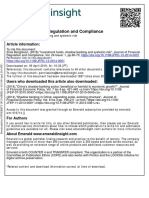0% found this document useful (0 votes)
199 views9 pagesModule 3 - The Exchange Rate Risk Management
The document discusses the foreign exchange market. It describes the foreign exchange market as an over-the-counter global marketplace where currencies are bought and sold. The market determines exchange rates between currencies and facilitates currency conversion for international trade and investments. It operates 24 hours a day globally, closing only on weekends, and averages $6.6 trillion in daily trading volume. The most liquid trading currency pairs are EUR/USD, USD/JPY, and GBP/USD.
Uploaded by
Marjon DimafilisCopyright
© © All Rights Reserved
We take content rights seriously. If you suspect this is your content, claim it here.
Available Formats
Download as PDF, TXT or read online on Scribd
0% found this document useful (0 votes)
199 views9 pagesModule 3 - The Exchange Rate Risk Management
The document discusses the foreign exchange market. It describes the foreign exchange market as an over-the-counter global marketplace where currencies are bought and sold. The market determines exchange rates between currencies and facilitates currency conversion for international trade and investments. It operates 24 hours a day globally, closing only on weekends, and averages $6.6 trillion in daily trading volume. The most liquid trading currency pairs are EUR/USD, USD/JPY, and GBP/USD.
Uploaded by
Marjon DimafilisCopyright
© © All Rights Reserved
We take content rights seriously. If you suspect this is your content, claim it here.
Available Formats
Download as PDF, TXT or read online on Scribd
/ 9













